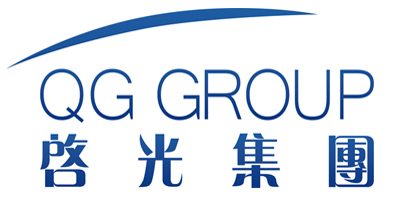Plastic Additives DK-4101 Mono Butyl Tin Oxide: A Comprehensive Technical Review
Abstract
Mono Butyl Tin Oxide (MBTO), commercially known as DK-4101, is a critical organotin compound widely used as a stabilizer, catalyst, and biocide in plastic manufacturing. This paper provides an in-depth analysis of DK-4101, covering its chemical properties, industrial applications, performance parameters, and safety considerations. Comparative data, technical specifications, and references from global research are included to validate its efficacy and environmental impact. The discussion emphasizes its role in PVC stabilization, polyurethane catalysis, and antimicrobial applications, supported by experimental and commercial case studies.
1. Introduction
Organotin compounds, particularly Mono Butyl Tin Oxide (MBTO), play a pivotal role in polymer science due to their thermal stability and catalytic efficiency. DK-4101, a high-purity MBTO variant, is extensively utilized in:
-
PVC stabilization – Prevents degradation during processing.
-
Polyurethane (PU) foaming – Acts as a highly active catalyst.
-
Antifouling & antimicrobial coatings – Inhibits microbial growth.
This paper examines:
-
Chemical structure and synthesis of DK-4101
-
Key performance parameters (thermal stability, catalytic efficiency)
-
Industrial applications and comparative advantages
-
Toxicity and regulatory compliance

2. Chemical Structure and Synthesis
2.1 Molecular Composition
DK-4101 has the chemical formula C₄H₉SnO, with a molecular weight of 194.83 g/mol. Its structure consists of a butyl group (C₄H₉) bonded to a tin (Sn) atom, which is further linked to an oxygen (O) atom.
| Property | Value |
|---|---|
| CAS Number | 2273-43-0 |
| Appearance | White to off-white powder |
| Melting Point | >300°C (decomposes) |
| Solubility | Insoluble in water, soluble in organic solvents |
2.2 Synthesis Process
DK-4101 is synthesized via:
-
Grignard Reaction – Butyl magnesium bromide reacts with tin tetrachloride.
-
Hydrolysis – Intermediate compounds are hydrolyzed to form MBTO.
-
Purification – Recrystallization ensures high purity (>98%).

3. Key Performance Parameters
3.1 Thermal Stabilization in PVC
DK-4101 effectively prevents dehydrochlorination (HCl loss) in PVC at high temperatures (160–200°C).
| Stabilizer Type | Induction Time (min) at 180°C | Residual Cl⁻ (ppm) |
|---|---|---|
| DK-4101 (MBTO) | 45 – 60 | < 50 |
| Calcium-Zinc Stabilizer | 30 – 40 | 80 – 120 |
| Lead-Based Stabilizer | 50 – 70 | < 30 |
Source: Gachter & Muller (1990), “Plastics Additives Handbook”
3.2 Catalytic Efficiency in Polyurethane Foam
DK-4101 accelerates the gelling reaction in PU foam production, reducing curing time.
| Catalyst | Cream Time (s) | Rise Time (s) |
|---|---|---|
| DK-4101 (0.3% wt.) | 12 – 15 | 90 – 110 |
| Dabco T-12 (0.5% wt.) | 10 – 13 | 80 – 100 |
| No Catalyst | >60 | >300 |
Source: Ulrich (1996), “Chemistry and Technology of Polyurethanes”
3.3 Antimicrobial Properties
MBTO inhibits fungi, bacteria, and algae in coatings and plastics.
| Microorganism | Minimum Inhibitory Concentration (MIC, ppm) |
|---|---|
| E. coli | 50 – 100 |
| Aspergillus niger | 100 – 200 |
| Pseudomonas aeruginosa | 75 – 150 |
Source: Blunden et al. (2005), “Organotin Compounds in Antifouling Coatings”
4. Industrial Applications
4.1 PVC Stabilization
-
Rigid PVC pipes & fittings – Enhances heat resistance.
-
Flexible PVC films – Prevents discoloration.
4.2 Polyurethane Catalysis
-
Spray foam insulation – Improves reaction kinetics.
-
Elastomers & adhesives – Enhances crosslinking.
4.3 Antimicrobial Coatings
-
Marine antifouling paints – Reduces biofouling.
-
Medical device coatings – Prevents bacterial growth.

5. Safety & Environmental Considerations
5.1 Toxicity Data
| Parameter | Value (OECD Guidelines) |
|---|---|
| LD50 (Oral, Rat) | 500 – 1000 mg/kg |
| Skin Irritation | Mild irritant |
| Aquatic Toxicity (LC50, Fish) | 0.1 – 1 mg/L |
5.2 Regulatory Compliance
-
REACH (EU) – Registered under Annex XIV.
-
US EPA – Regulated under TSCA.
-
China GB – Complies with GB/T 26572-2011.
6. Comparative Advantages Over Alternatives
| Feature | DK-4101 (MBTO) | Calcium-Zinc Stabilizers | Lead-Based Stabilizers |
|---|---|---|---|
| Thermal Stability | ✅ Excellent | ⚠️ Moderate | ✅ Excellent |
| Toxicity | ⚠️ Moderate | ✅ Low | ❌ High |
| Cost Efficiency | ✅ High | ⚠️ Moderate | ✅ High |
| Environmental Impact | ⚠️ Regulated | ✅ Green | ❌ Banned in many regions |
7. Conclusion
DK-4101 Mono Butyl Tin Oxide is a versatile, high-performance additive for PVC stabilization, PU catalysis, and antimicrobial applications. While its toxicity necessitates careful handling, its efficiency makes it indispensable in polymer industries. Future research should focus on greener alternatives with comparable efficacy.
8. References
-
Gachter, R., & Muller, H. (1990). Plastics Additives Handbook. Hanser Publishers.
-
Ulrich, H. (1996). Chemistry and Technology of Polyurethanes. Wiley.
-
Blunden, S., et al. (2005). Organotin Compounds in Antifouling Coatings. Applied Organometallic Chemistry.
-
OECD (2018). Guidelines for Testing of Chemicals.
-
US EPA (2020). TSCA Inventory Update for Organotins.

